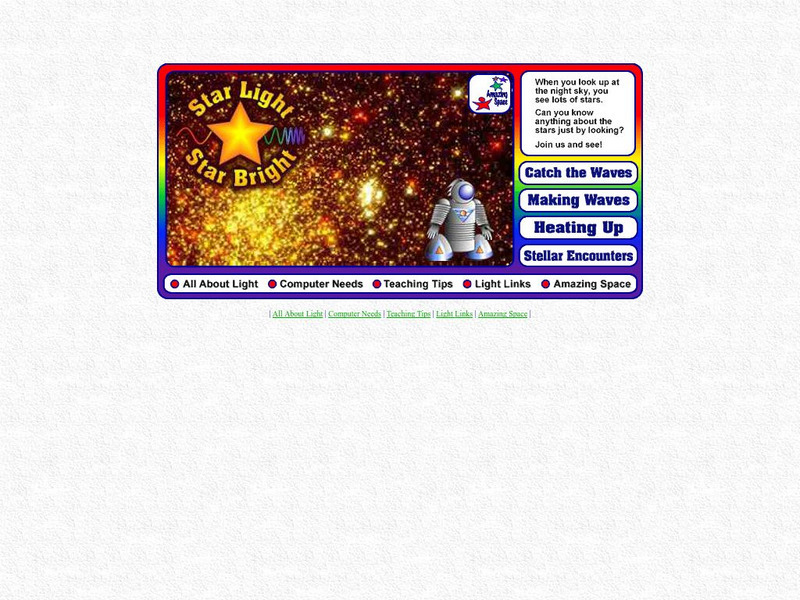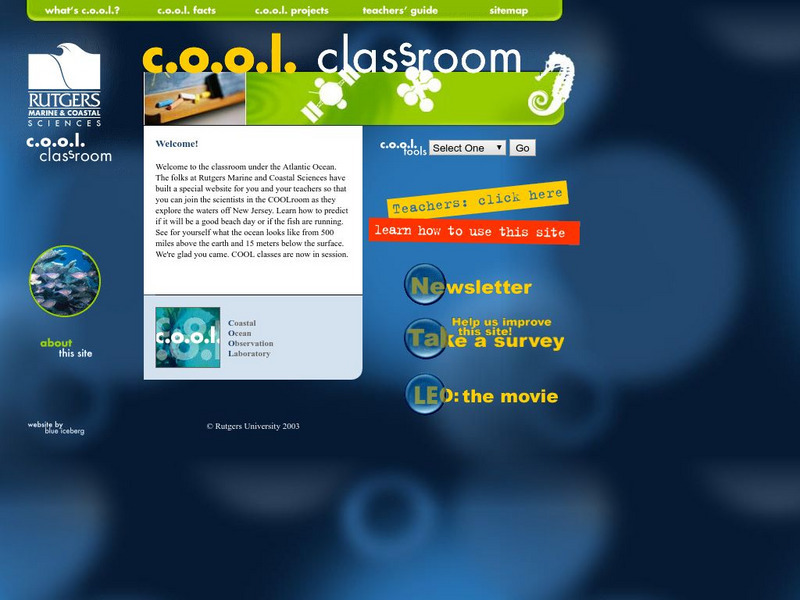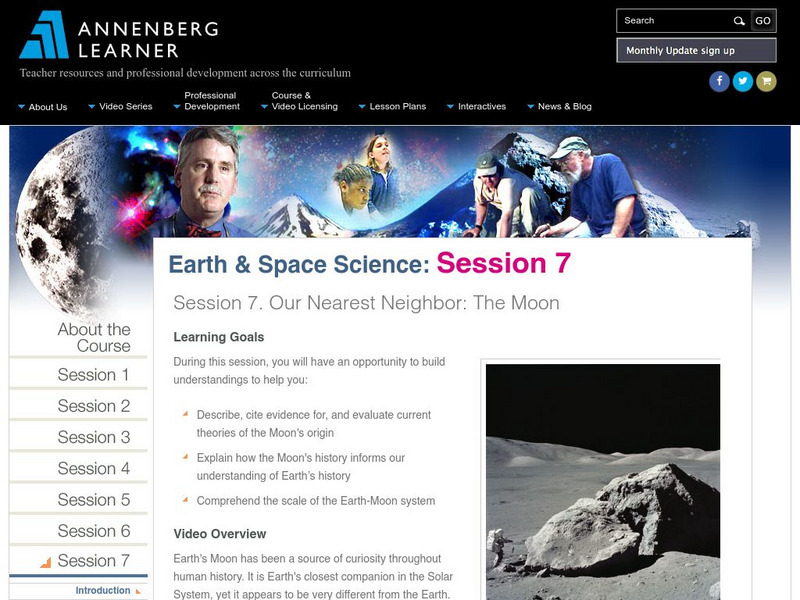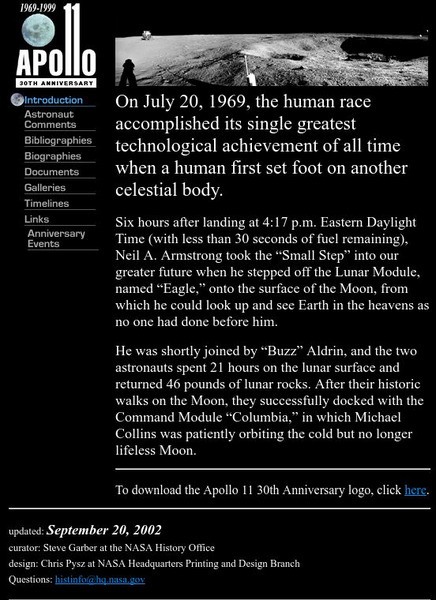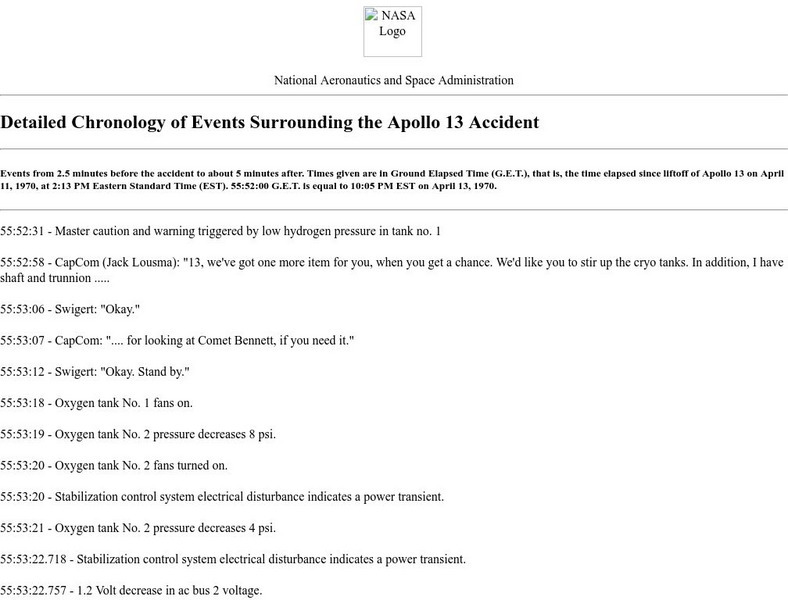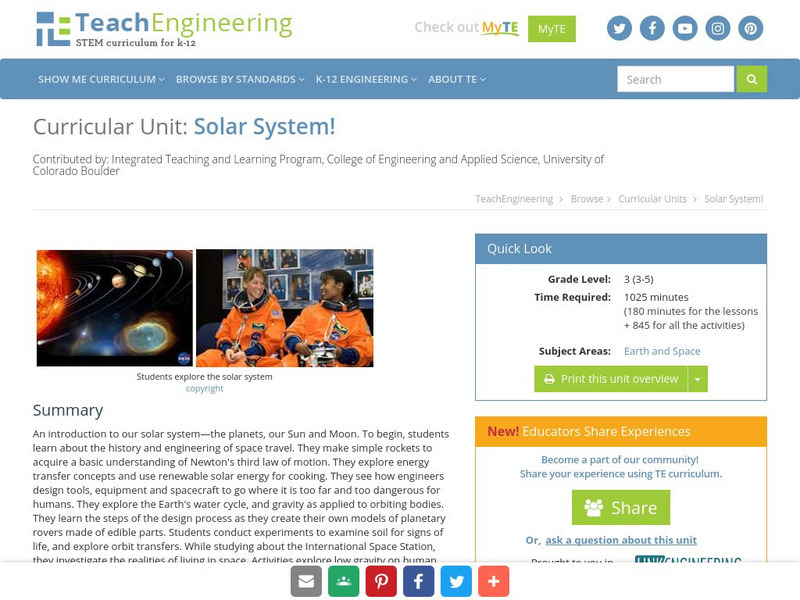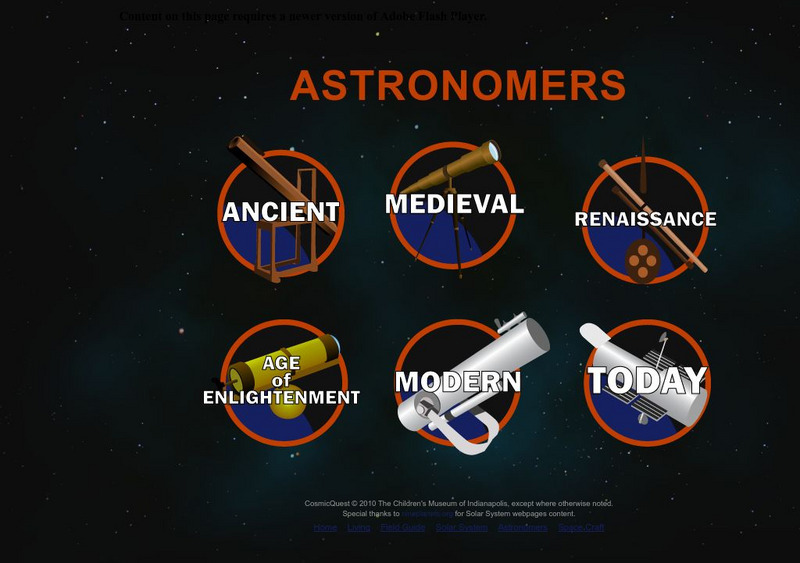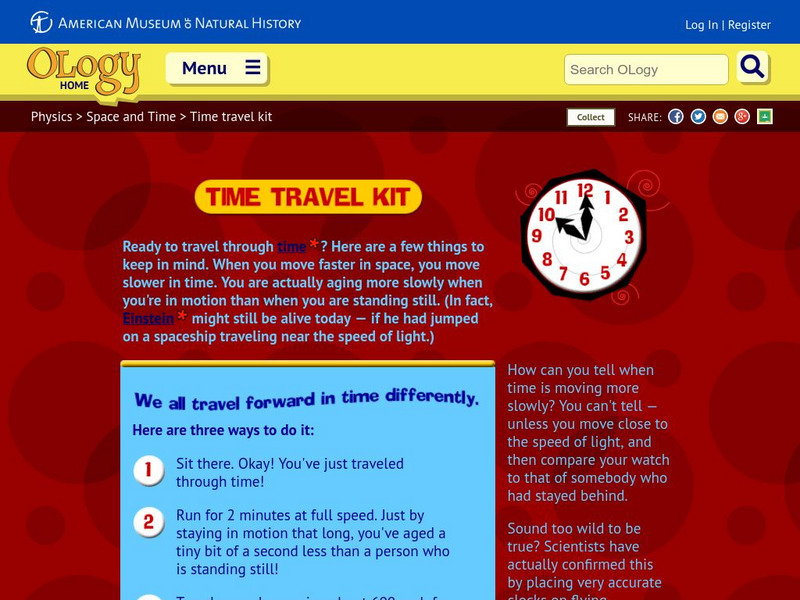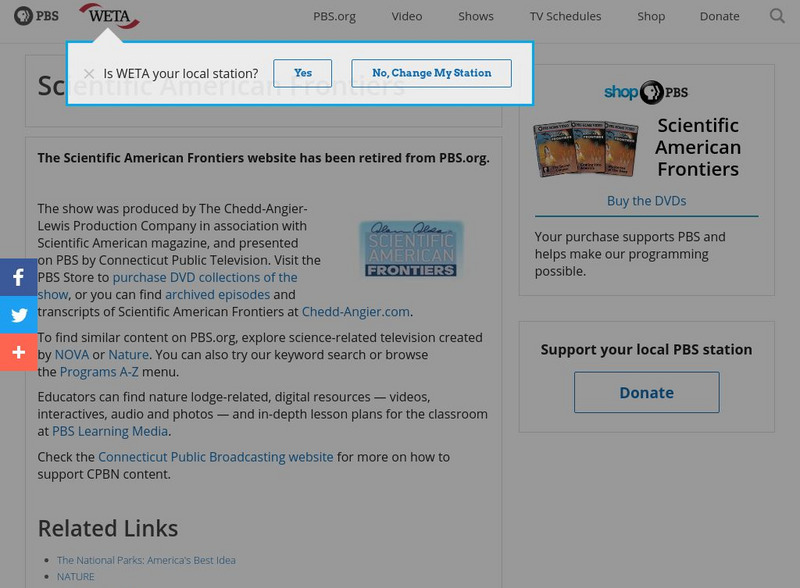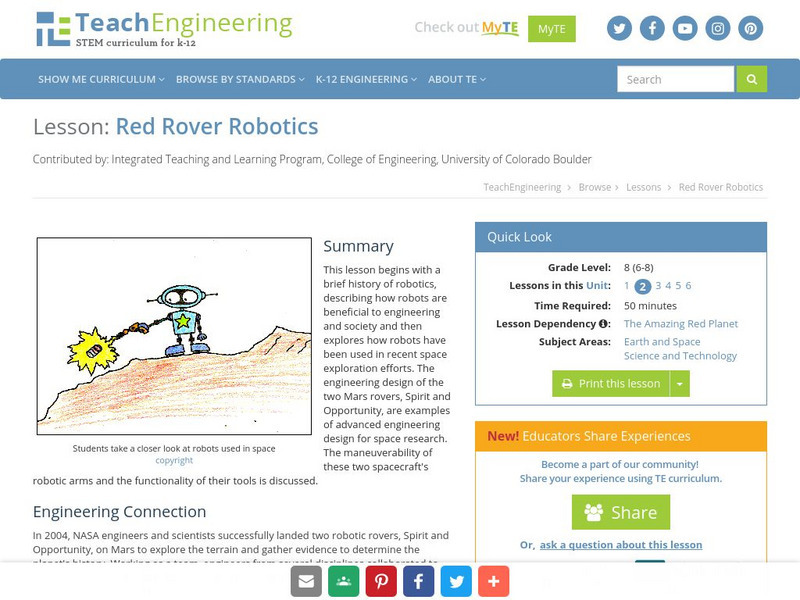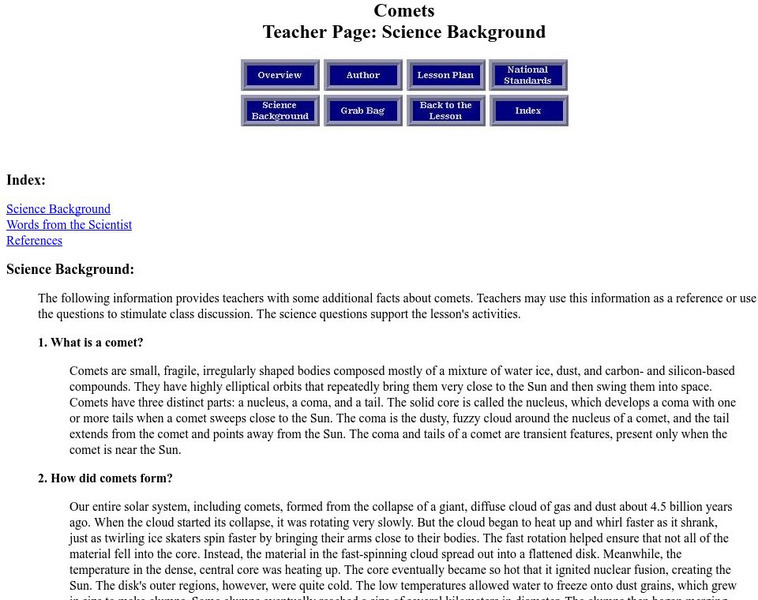Views of the Solar System
Views of the Solar System: The Solar System
Explore the solar system through this site that includes vivid multimedia resources. Learn the latest scientific discoveries, the history of space exploration, and much more. Site includes videos, graphics, articles, and photographs.
Space Telescope Science Institute
Amazing Space: Star Light Star Bright: Electromagnetic Radiation
Use this tool to learn facts about the range of the electromagnetic spectrum, from radio waves to gamma rays.
Space Telescope Science Institute
Amazing Space: Mission Mastermind
This site is provided for by Amazing Science. "NASA needs your help in planning a Hubble Servicing Mission. Join the team!"
Space Telescope Science Institute
Amazing Space: Comets: Make a Comet
Create your own comet using different combinations of chemical ingredients and see what it looks like when completed.
Space Telescope Science Institute
Amazing Space: Comets: Comet Tails
Learn how to recognize a comet by the type of tail it has.
Space Telescope Science Institute
Amazing Space: Star Light Star Bright
A few short, interactive activities on light waves can be found on this site. Numerous others links and teacher resources are posted here as well. A good background on light is offered for teachers.
Space Telescope Science Institute
Amazing Space: Galaxies Galore: Games and More
This is a fun and useful site to learn about galaxies. Content includes a building model to create your own Milky Way, games for learning the various types of galaxies, and more fun games.
Other
Rutgers Marine & Coastal Sciences: Cool Classroom
Students and teachers can explore the work of marine scientists and observe the ocean from their computers. Learn about Rutgers Coastal Ocean Observation Laboratory, discover why oceanography is important, and see what life is like in...
Annenberg Foundation
Annenberg Learner: Earth and Space Science: Our Nearest Neighbor: The Moon
Material to begin an exploration of the Moon, theories about its origin, and its history's relationship to our Earth's history. An hour-long video is accompanied by learning goals, an outline and overview, details on the Moon's movement,...
NASA
Nasa: 1969 1999: Apollo 30th Anniversary
A special anniversary site for the Apollo 11 mission to the moon. Complete with comments from the astronauts, galleries with many images related to the mission, and much more.
Smithsonian Institution
Smithsonian Education: Walk on the Moon
This online lesson helps students explore primary sources, including photographs and audio and video recordings, in order to learn about the Apollo crew and spacecraft, the history of the space race, and the incredible technological...
Smithsonian Institution
Smithsonian Institution: Time and Navigation
Explore navigation methods by sea, air, and space, what latitude and longitude mean, how GPS works, about satellite navigation, and learn about professional navigators. Includes a timeline of developments in navigation from 1280 to the...
NASA
Nasa: Detailed Chronology of Events Surrounding the Apollo
How would you like to experience what was actually said during the Apollo 13 accident? At this site read recorded NASA information from 2.5 minutes before the accident to about 5 minutes after.
National High Magnetic Field Laboratory
Magnet Academy: John Daniel Kraus
For a man whose career involved the entire known universe, John Kraus had a remarkably insular upbringing. He was born and raised in Ann Arbor, Michigan, and earned his bachelor's, master's and doctoral degrees in physics, all at the...
TeachEngineering
Teach Engineering: Solar System!
An introduction to our solar system: the planets, our Sun and our Moon. Students begin by learning the history and engineering of space travel. They make simple rockets to acquire a basic understanding Newton's third law of motion. They...
Children's Museum
Children's Museum of Indianapolis: Cosmic Quest: Astronomers
Explore the achievements of notable astronomers beginning with ancient times through modern space explorers.
American Museum of Natural History
American Museum of Natural History: O Logy: Time Travel Kit
Would you like to travel forward in time? Use this time travel kit to help you think through different ways to experience time travel. Click on the starred words to learn more about the topic.
American Museum of Natural History
American Museum of Natural History: O Logy: You Light Up My Life!
Brief explanation of observations that Arthur Eddington used to test Einstein's general theory of relativity. Click on the starred words to learn more about the topic.
PBS
Pbs Teachers:journey to Mars: Why Go to Mars?
Explore the technological advancement of 3-D imaging critical to the 1997 Pathfinder mission. Make a pair of 3-D glasses and use them to view Mars images on the Internet.
TeachEngineering
Teach Engineering: Red Rover Robotics
This lesson will start with a brief history of robotics and explain how robots are beneficial to science and society. The lesson then will explore how robots have been used in recent space exploration efforts. The engineering design of...
TeachEngineering
Teach Engineering: What's Air Got to Do With It?
Students are introduced to the concepts of air pollution and air quality. The three lesson parts focus on the prerequisites for understanding air pollution. First, students use M&Ms to create a pie graph that expresses their...
Library of Congress
Loc: America's Story: Florida
Explore the diversity of the people of Florida. "Blast off" with space facts. Do you know where the first watermelon came from?
TeachEngineering
Teach Engineering: The Outer Planets
Students explore the outermost planets of our solar system: Saturn, Uranus and Neptune. They also learn about characteristics of Pluto and its interactions with Neptune. Students learn a little about the history of space travel as well...
Space Telescope Science Institute
Amazing Space: Comets
Amazing Science provides teachers with facts about comets that they can use as a reference or to stimulate class discussion. The science questions support the lesson's activities.


